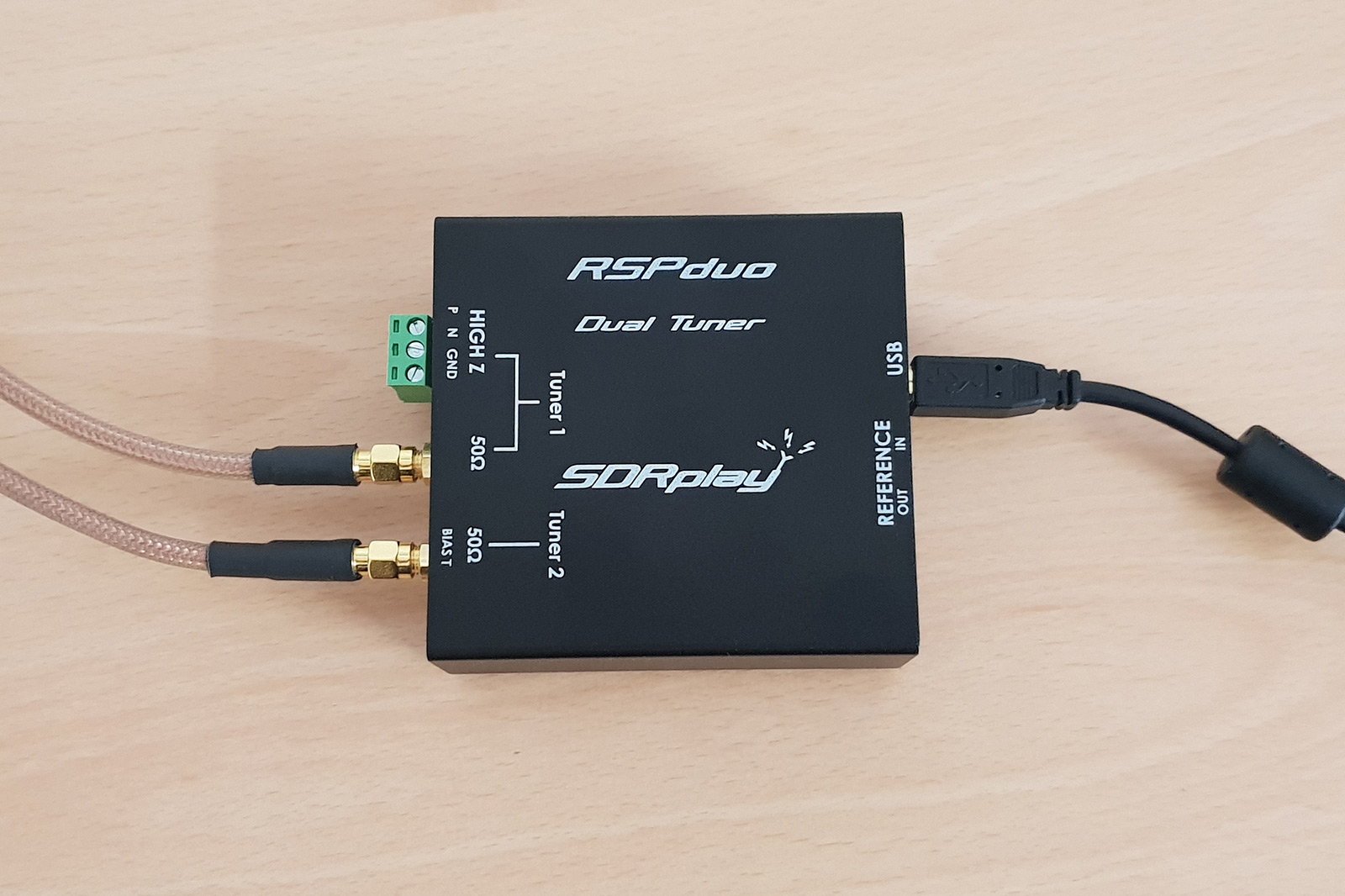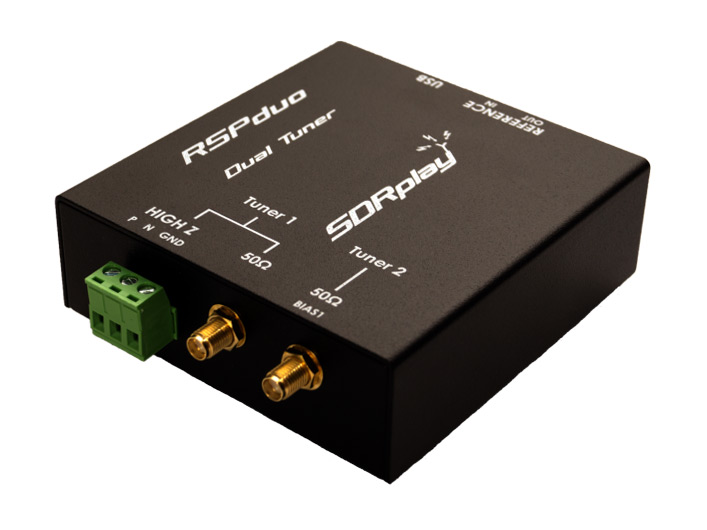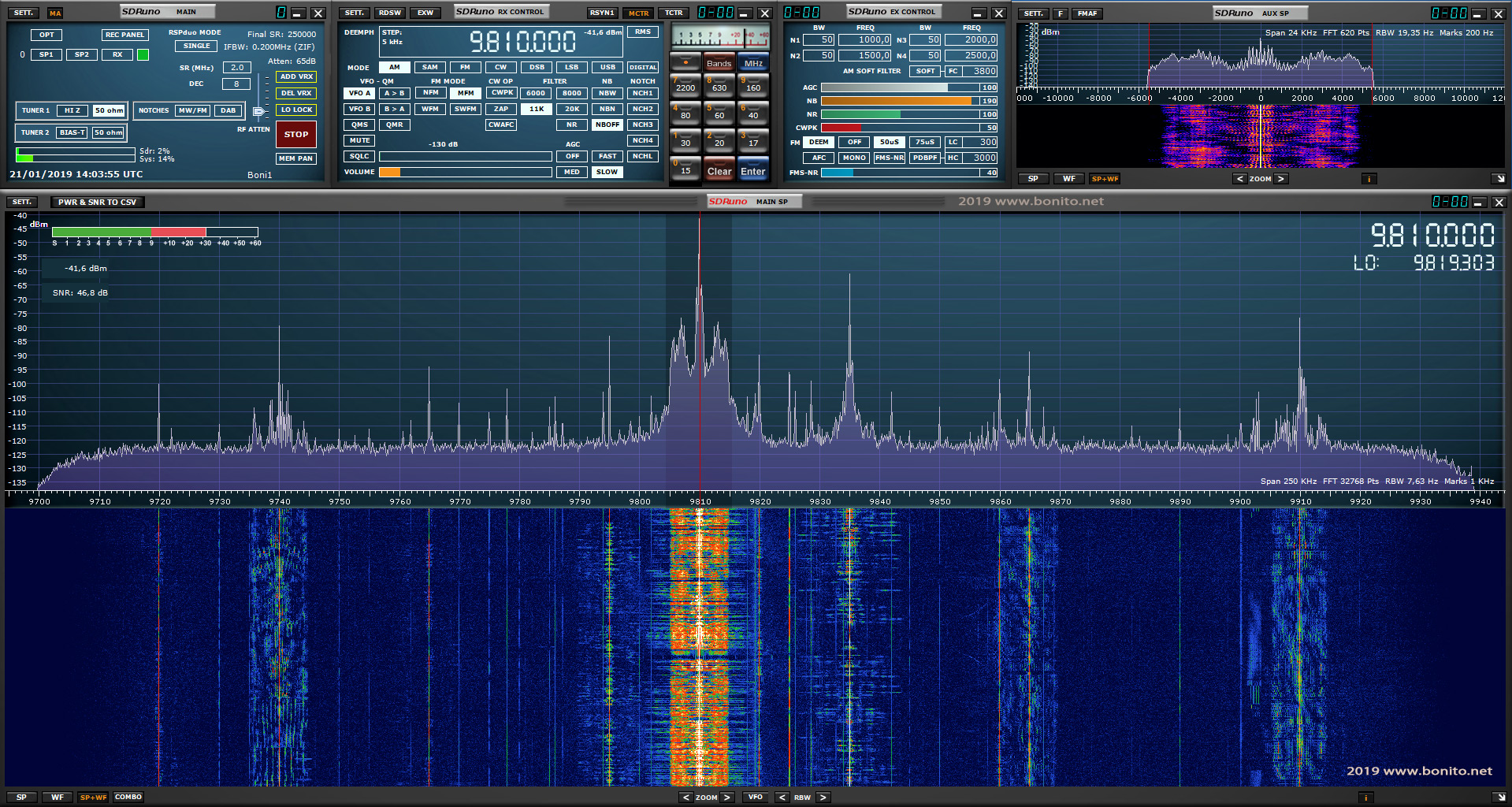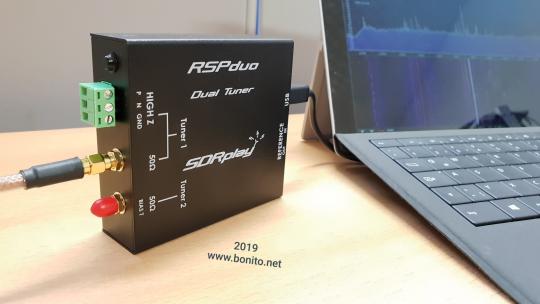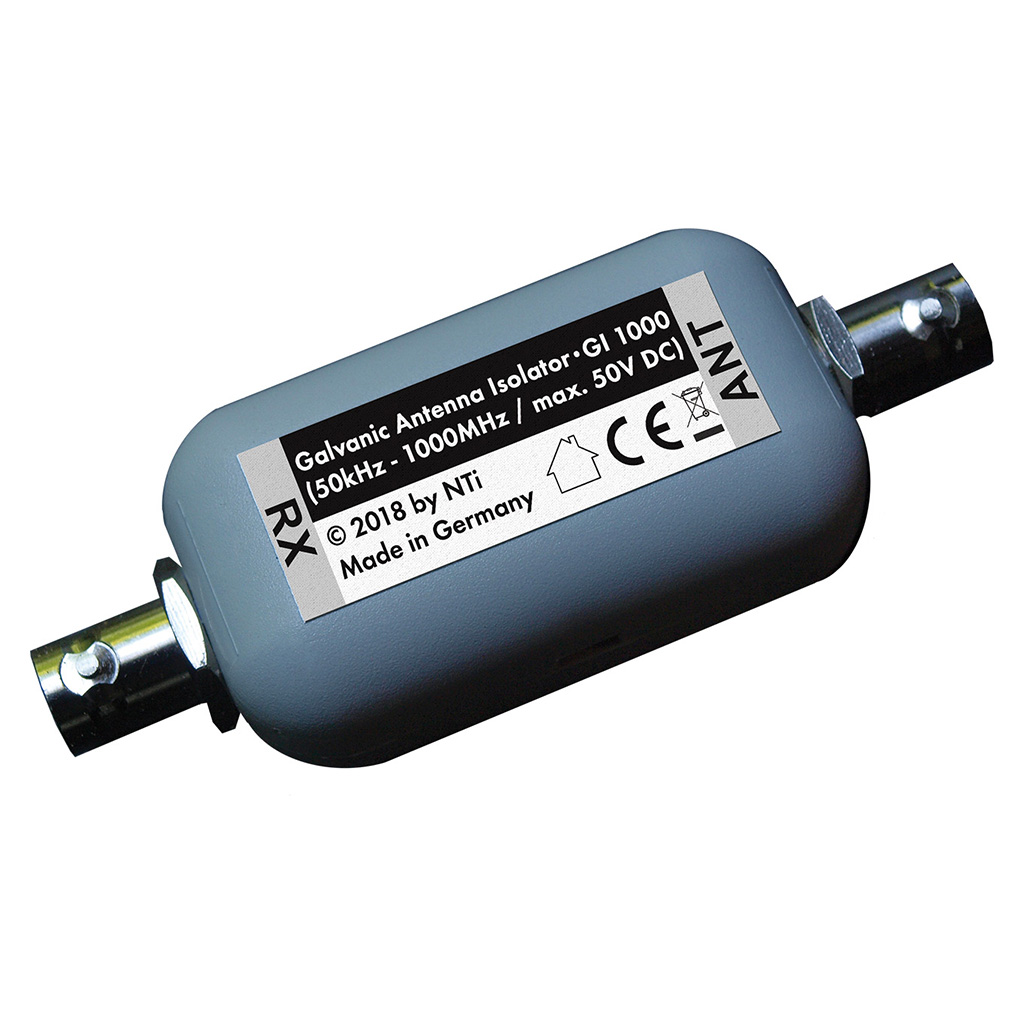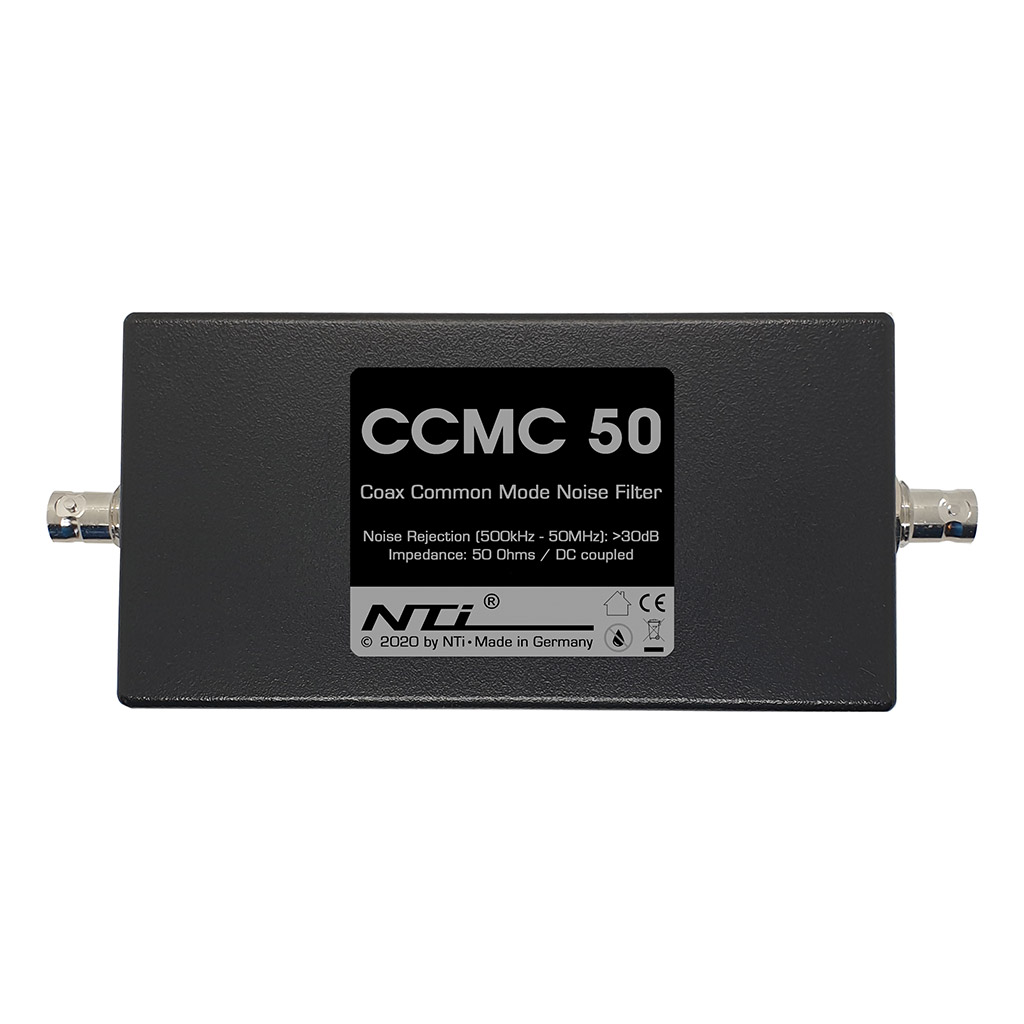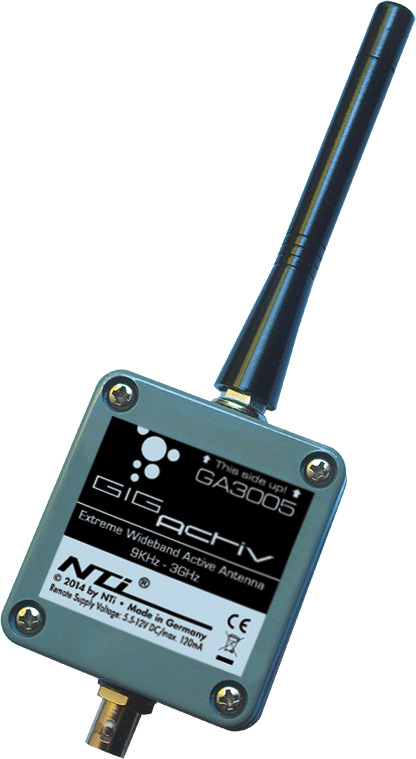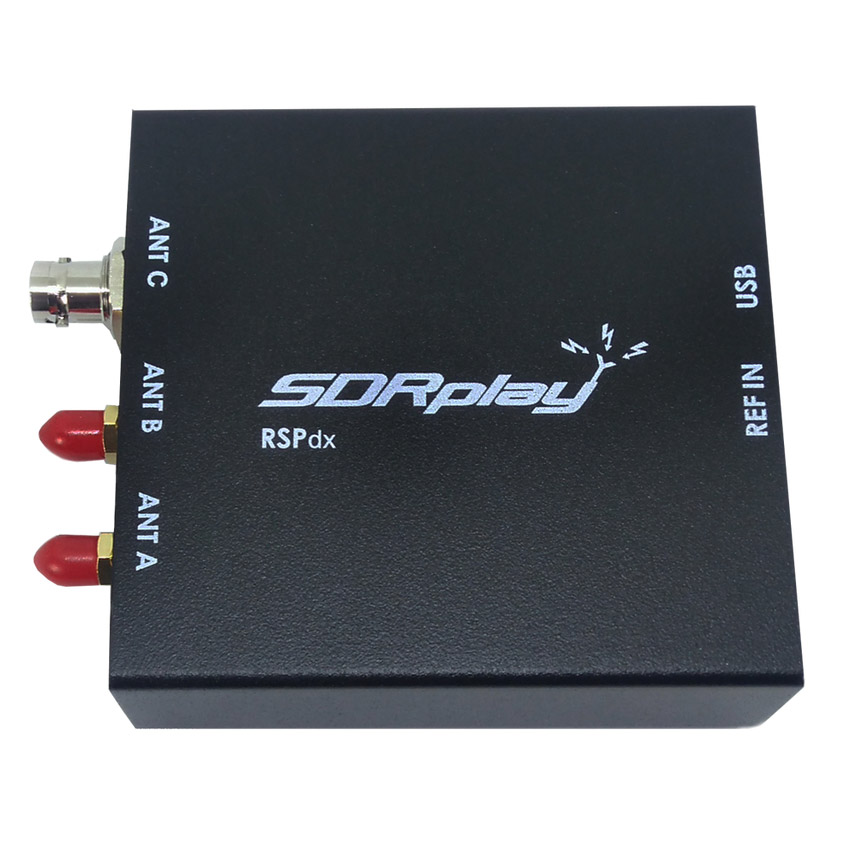€289.00*
Available in 14 days, delivery time 2-5 days
Product information "SDRplay - RSPduo"
SDRplay - RSPduo Dual Tuner SDR
Der SDRplay RSPduo ist ein preisgünstiger Dual-Tuner Breitband-SDR mit großem Funktionsumfang, der das gesamte HF-Spektrum von 1kHz bis 2GHz abdeckt und bis zu 10MHz Spektrum bietet. In Kombination mit der SDRuno-Software für Windows, können Sie zwei völlig getrennte 2MHz-Spektren zwischen 1kHz und 2GHz gleichzeitig überwachen. Dazu kann man, nur mit diesem Modell, Diversityempfang nutzen. Mit Diversity kann man von 2 unterschiedlichen Antennen Signale empfangen und mittels einfacher Bedienung den Empfang deutlich verbessern.
Unseren Geräte- bzw. Empfangstest finden Sie hier: https://www.bonito.net/hamradio/sdrplay-rspduo-lasst-die-spiele-beginnen/
Das RSPduo bietet drei per Software wählbare Antenneneingänge und Clocking-Funktionen, die sich ideal für industrielle, wissenschaftliche und pädagogische Anwendungen eignen. Es benötigt lediglich einen PC und eine Antenne, um eine hervorragende Funktionalität des Kommunikationsempfängers zu gewährleisten.
Eine dokumentierte API ermöglicht es Entwicklern, neue Demodulatoren oder Anwendungen rund um die Plattform zu erstellen.
Leistungsmerkmale:
- Gleichzeitiger Empfang auf zwei völlig unabhängigen 2MHz-Fenstern zwischen 1kHz und 2GHz
- Gleichzeitige Verarbeitung von 2 Antennen ermöglicht Peilung, Diversity und Rauschunterdrückung
- Ideal für Crossband-Vollduplex-Empfang, z.B. HF + VHF oder VHF + UHF
- Gleichzeitiger Dump1090- und VHF-ATC-Empfang
- Gleichzeitige Überwachung und Aufzeichnung von 2 ISM-Bändern
- Deckt alle Frequenzen von 1kHz über VLF, LF, MW, HF, VHF, UHF und L-Band bis 2GHz lückenlos ab.
- Empfang, Überwachung und Aufzeichnung von bis zu 10MHz Spektrum gleichzeitig (Single Tuner Modus)
- Externer Takteingang und -ausgang zur Synchronisation oder Anschluss an den GPS-Referenztakt
- Ausgezeichneter Dynamikbereich für anspruchsvolle Empfangsbedingungen
- Funktioniert mit gängiger EXTIO-basierter SDR-Software (verfügbar ab Mitte 2018)
- Software upgradefähig für zukünftige Standards
- Starkes und wachsendes Software-Support-Netzwerk
- API für die Entwicklung von Demodulatoren und Anwendungen
- Kalibrierte S-Meter/ HF-Leistung und SNR-Messung mit SDRuno (inklusive Datenaufzeichnung auf .CSV-Datei)
- Ideal für die portable Überwachung von ISM/ IoT/ Telemetriebändern <2GHz
- Technischer Support über www.sdrplay.com
Weitere Merkmale
- Dual-Tuner bietet eine unabhängige Abdeckung von 1kHz bis 2GHz mit 2 Antennenanschlüssen gleichzeitig.
- 14-Bit-ADC-Silizium-Technologie (kein weiterer 8-Bit-Dongle!)
- Bis zu 10MHz sichtbare Bandbreite (Single Tuner Mode) oder 2 Scheiben 2MHz Spektrum (Dual Tuner Mode)
- 3 per Software wählbare Antennenanschlüsse (2 x 50Ohm und 1 x 1k Ohm hochohmiger symmetrischer/unsymmetrischer Eingang)
- Hochohmiger Antennenanschluss (1kHz bis 30MHz) mit wählbarem MW-Notchfilter und 2 Vorwahlfiltern zur Auswahl
- Software wählbare AM/FM- und DAB-Rundfunkfilter für die 2 SMA-Antennenports (1kHz bis 2GHz)
- Externer Takteingang und -ausgang ermöglicht einfache Synchronisation auf mehrere RSPs oder externen Referenztakt
- Stromversorgung über das USB-Kabel mit einer einfachen Typ-B-B-Buchse
- 11 hochselektive, eingebaute Front-End-Vorwahlfilter an den beiden SMA-Antennenports
- Software wählbarer mehrstufiger Low Noise Vorverstärker
- Bias -T-Netzteil zur Versorgung von LNA-Antennenmontage 4,7Volt bei 100mAh
- In einem robusten, schwarz lackierten Stahlgehäuse.
- SDRuno-World Class SDR-Software für Windows
- Dokumentierte API für die Entwicklung neuer Anwendungen
Technische Daten:
- Frequency Range 1kHz – 2GHz
- Antenna Connector SMA
- Antenna Impedance 50 Ohms
- Operating Temperature Range -10˚C to +60˚C
- Current Consumption (Typical) Single Tuner Mode - 185mA
- Dual Tuner Mode - 320mA
- Case Size 95mm X 80mm X 30mm
- Case Weight 110 grams
- USB Connector USB Type B
- Maximum Input Power +0dBm Continuous
- +10dBm Short Duration
- ADC Sample Rates 2MSPS – 10.66MSPS
- ADC Number of Bits 14bit 2MSPS – 6.048MSPS
- 12bit 6.048MSPS – 8.064MSPS
- 10bit 8.064MSPS – 9.216MSPS
- 8bit >9.216MSPS
- Bias – T 4.7V
- 100mA Guaranteed
- Note :- Bias T has an over current protection circuit. Current in excess of 100mA will cause the
- bias T voltage to disable. Removal of the overcurrent condition and a reset of the bias T control
- will re-establish the voltage
- Reference High Temperature Stability (0.5ppm) 24MHz TCXO.
- Frequency error trimmable to 0.01ppm in field.


